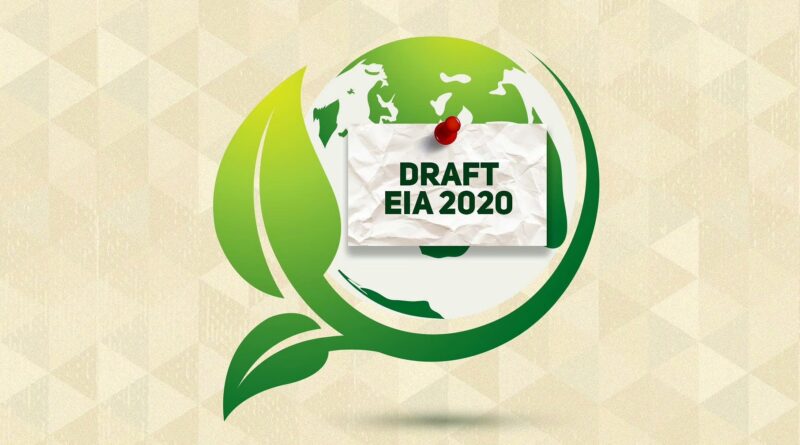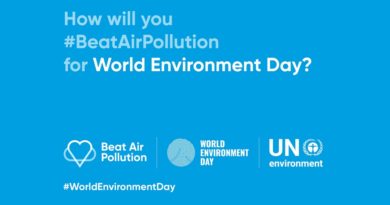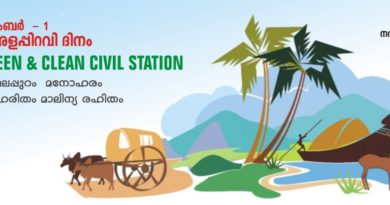EIA: A body blow to the environment
DIVYA TRIVEDI | Frontline
The new EIA draft notification, which exempts 40 types of projects from prior environmental clearance and deprives local communities of a say in the matter in the name of ease of doing business, poses a grave threat to the environment.
The doctrine of public trust implies that the state is a trustee of natural resources like air, water and forest. These resources are to be enjoyed by the general public and should not be transferred to private or commercial use if such a transfer interferes with the right of the public with regard to them. It legitimises the public as valid stakeholders of the land, rivers and the ecology of the country, which the government must protect and manage. This ancient Roman doctrine has often guided modern Indian jurisprudence.
Prakash Javadekar, Union Minister of Environment, Forests & Climate Change (MoEFCC), has issued a revised draft Environment Impact Assessment (EIA) notification. It threatens to water down the already weakened EIA and do away with environment clearance altogether. In his own words, the EIA notification is intended to enhance the “ease of doing business” by reducing delays in approving project applications and granting licences.
With the draft notification the doctrine of public trust is at stake. The draft exempts 40 types of projects from prior environmental clearance. These include sand or clay extraction by Kumhars, or earthen tile makers; community works under the Mahatama Gandhi National Rural Employment Guarantee Act (MGNREGA); digging for foundations of buildings; non-mining activities; industrial estates with a project area below 500 hectares; manufacturing or strategic units under the Defence Ministry for explosives, detonators or fuses; and extraction for linear projects such as roads and pipelines..
Under the previous environmental regulation regime, public hearings emerged as an important platform for rural and local communities to voice their opinion on projects coming up in their areas. In the new EIA draft notification, the notice period for public hearings has been reduced from 30 to 20 days. Several categories of projects have been completely exempted from public hearing: all B2 projects, modernisation of irrigation projects, all linear projects in border areas and Island Coastal Regulatory Zones and Notified Industrial Estates including parks, complexes, export processing zones (EPZs), special econonic zones (SEZs) special investment regions (SIRs) and industrial clusters.
In the draft notification, a border area is defined as an “area falling within 100 kilometres aerial distance from the Line of Actual Control with bordering countries of India”. Activists say this will include most of the rich and fragile ecology of the north-eastern region. The draft also exempts all inland waterways projects, expansion or widening of national highways and building construction projects of built-up area up to 1,50,000 sqm from prior clearance. A technical expert committee with 10 members is being introduced to regularly categorise or re-categorise projects as A, B1 or B2.
No information relating to projects concerning national defence and security or involving other strategic considerations as determined by the Central government will be placed in the public domain. This would leave a whole lot of projects that have a big social impact on marginalised communities or encroach upon wildlife corridors, core protected areas such as tiger reserves, and ecologically fragile areas outside the purview of public scrutiny.
The most worrying aspect of the draft notification, according to experts, is the introduction of post-facto clearance of projects. This goes against a Supreme Court order delivered on April 1, 2020 in Alembic Pharmaceuticals vs Rohit Prajapati and Others that held ex post facto environmental clearances contrary to law. “Environment law cannot countenance the notion of an ex post facto clearance. This would be contrary to both the precautionary principle as well as the need for sustainable development. The concept of an ex post facto EC (environmental clearance) is in derogation of the fundamental principles of environmental jurisprudence and is an anathema to the EIA notification dated 27 January 1994. It is, as the judgment in Common Cause holds, detrimental to the environment and could lead to irreparable degradation,” the apex court observed.
India introduced EIA in 1976. In 1994, EIA was promulgated under the Environment (Protection) Act, 1986 and environmental clearances became mandatory for industrial or infrastructural growth. In 2006, the Congress government under Prime Minister Manmohan Singh, who was also the Minister of Environment & Forests (MoEF), revised the clauses of the EIA notification to replace the existing environment clearance regime. At the time, activists alleged that the revisions were largely guided by the Govindarajan Committee on Investment Reforms, set up by the National Democratic Alliance (NDA) regime in 2001, with the sole intent of removing legislative and policy bottlenecks.
The 2006 notification incorporated speedy clearance mechanisms to assist investors and was more facilitative than regulatory in nature. Nevertheless, it allowed for the scrutiny of a project for its social and environmental impact through a public consultation process.
Destructive paradigm
According to Leo Saldanha of the Environment Support Group, the 2006 and 2020 notifications are two sides of the same coin. “Both are based on the same destructive paradigm that pushes development at any cost,” he said. “In the early 2000s, obsessed by the Chinese model of development, India pushed ahead with its investment priorities based entirely on economic growth rates. P. Chidambaram, then Indian Finance Minister, proclaimed that the Government of India was ‘willing to tolerate debate, and perhaps even dissent, as long as it does not come in the way of 8 per cent growth’. In this manner, the United Progressive Alliance (UPA) governments I and II re-emphasised what the NDA government had previously sought to achieve by setting up the Govindarajan Committee,” he added.
On March 12, the Ministry released the 2020 draft notification online in English and Hindi. On April 11, it published the notification in the Gazette of India. It fixed 60 days as the deadline for receiving feedback on the draft from the public. In the light of the stringent lockdown and the pandemic, several representations were made to the Ministry concerning the deadline and it was extended until June 30. Vikrant Tongad, founder of Social Action for Forest & Environment, approached the Delhi High Court for clarity and an extension of the deadline. Advocate Gopal Sankarnarayanan, appearing for Tongad, pointed out that it was not clear when the 60-day period commenced. “If the 60-day period commences on the date of the draft notification, March 23, 2020, the extended date of expiry will be July 18, 2020. If the date of notification in the Gazette (April 11, 2020) is taken as the start of the 60-day period, the extended date of expiry will be August 9, 2020,” Tongad’s petition said.
“This draft notification proposes significant changes to the existing regime, including removing public consultation entirely in certain instances, reducing the time for public consultation from 45 days to 40 days, and allowing post facto approvals for projects. Such a significant set of changes is bound to affect the public and members of communities in virtually all aspects of life, and they have a right to meaningfully respond to the same,” he said in the petition.
The court extended the notice period up to August 11 and directed the government to translate the draft into other Indian languages within 10 days, specifying at least those languages mentioned in the Eighth Schedule to the Constitution, in order to aid effective dissemination of the notification. When the Centre failed to comply with the court order, Tongad alleged “wilful disobedience” and “deliberate defiance” on the part of the Centre. Justice Sanjeev Sachdeva initiated contempt proceedings against the Centre, which were later stayed by the Supreme Court.
The United Conservation Movement Charitable and Welfare Trust filed a public interest litigation (PIL) petition in the Karnataka High Court asking for the translation of the notification in all 22 regional languages of the Eighth Schedule. The petition also asked for the extension of the deadline for sending responses to December 11. On August 5, the court stayed the publication of the EIA notification until September 7, the next date of hearing.
Apparently, 17 lakh letters and emails were received by the Ministry in response to the draft. But on July 23, the cyber crime cell of the Special Cell, Delhi Police, sent a notice under the Unlawful Activities (Prevention) Act (UAPA) to Fridays For Future (FFF) India, a people’s movement for climate justice, for challenging the “sovereignty and integrity of India”. The student-run digital campaign had asked people to write emails to the Environment Minister urging him to reconsider the notification. The notice, served under the IT Act section 79(3)(B), stated that Javadekar had complained about receiving multiple emails with the subject name “EIA 2020”. The website of FFF India was blocked along with websites of two other environmental groups, Let India Breathe and There is no Earth. The website “depicts objectionable contents and unlawful activities or terrorist act, which are dangerous for the peace, tranquility and sovereignty of India. The publication and transmission of such objectionable content is a cognizable and punishable criminal offence under the UAPA,” stated the notice.
Fridays For Future is an international movement led by the climate change activist Greta Thunberg. Several environmentalists wondered whether writing to a Minister constituted attacking the sovereignty of India.
Legilitimising illegality
Jairam Ramesh, former Environment Minister and Chairman of the Standing Committee on Science & Technology, Environment, Forests and Climate Change, wrote a letter to Javadekar noting his “strongest objections” to the draft notification. He took a dig at M. Venkaiah Naidu, Chairman of the Rajya Sabha, saying that his “rightly and nicely formulated equation” of nature+culture=future would be thrown out of the window if the draft EIA 2020 notification became a reality.
He said the post facto approvals allowed bythe EIA notification went against the very principle of assessment and public participation prior to environment clearance and had provisions that would routinely legitimise illegality. “It increases validity of environment clearances allowing projects to ‘secure’ land for long durations even when they are not constructed. This promotes land grab, not development. It gives the Union government full powers to appoint State Environmental Impact Assessment Authorities. This is yet another nail on the coffin of cooperative federalism,” he said.
He added that these changes were not based on the 3 As—audits, assessments and analyses. “The changes are not based on any research. They reflect a mindset that sees environmental regulation as an unnecessary regulatory burden and not as an essential obligation to be met for the health and welfare of our people and for ensuring development that is sustainable.”
Shashi Tharoor, Congress MP, echoed Jairam Ramesh’s sentiments and said in a series of tweets: “GOI’s draft EIA notification makes it easier for businesses to obtain environmental clearances. It legitimises some actions that are currently categorised as violations, for example, in construction. Streamlining regulation is OK, but damaging environment is not. The draft notification reduces the frequency of compliance reports required from project owners from once every six months to once every year. Again, that’s fine only if environmental safety is assured. Have experts been asked?”
He pointed out the other liberties the Bharatiya Janata Party (BJP) government had taken with the environment under the lockdown. “The National Board for Wildlife (NBWL) approved clearances for projects in 11 States through a virtual meeting, including Nagpur-Mumbai superhighway (32,000+ trees to be chopped), Goa highway passing through Mollem Wildlife Sanctuary, coal-mining in Dehing Patkai Elephant Reserve in Assam, etc. NBWL also cleared a railway bridge in Madhya Pradesh and Telangana which goes through the Kawal tiger corridor. It’s time the Govt levelled with us: are the environment and wildlife being tossed aside in the name of development? If so, will someone openly share cost/benefit with public?” he said.
The People’s Union for Civil Liberties, Maharashtra, sent a letter to the government stating: “The proposed EIA 2020 is not in line with India’s international obligations under the Rio Declaration, the Paris Agreement or with any of the other international environmental conventions that serve as guiding legal instruments, e.g. the Espo Convention or the Aarhus Convention. Responsible business conduct under the U.N. Guiding Principles on Business and Human Rights and the upcoming National Action Plan are all premised on the existence of a strong regulatory framework and are hence bound to fail in ensuring accountability if the laws governing EIA are diluted in this fashion.”
Since Parliament and the State Assemblies have not been functioning for five months now because of the pandemic, some citizens organised a virtual Janata Parliament to hold the government accountable for various policies pushed through amidst COVID-19.
Manshi Asher of Himdhara, Environment Research and Action Collective, Himachal Pradesh, pointed out that 40 new coalfields would be opened, seven of them in no-go areas and in the middle of forests that were home to indigenous communities. “The ease of doing business model is driving not just dilutions of labour laws but also environment laws. We need to put both in the same category and look at them critically,” it said.
Ashish Kothari, founder of Kalpavriksh, ended the session on the environment by inviting the participants to vote for eight resolutions, one of which stated: “Withdraw the draft EIA notification and begin widespread consultation to draft a comprehensive environmental regulatory regime, coordinated by a team of independent people with substantial environmental expertise (including from local communities), formed in consultation with the Parliamentary Standing Committee on S&T and Environment, and including a thorough, participatory review of experience of the existing EIA notification.” He also demanded the withdrawal of clearances given to mining, industrial, and infrastructural projects in ecologically and culturally sensitive areas in the last five months, and the auctioning of coal mining blocks.




